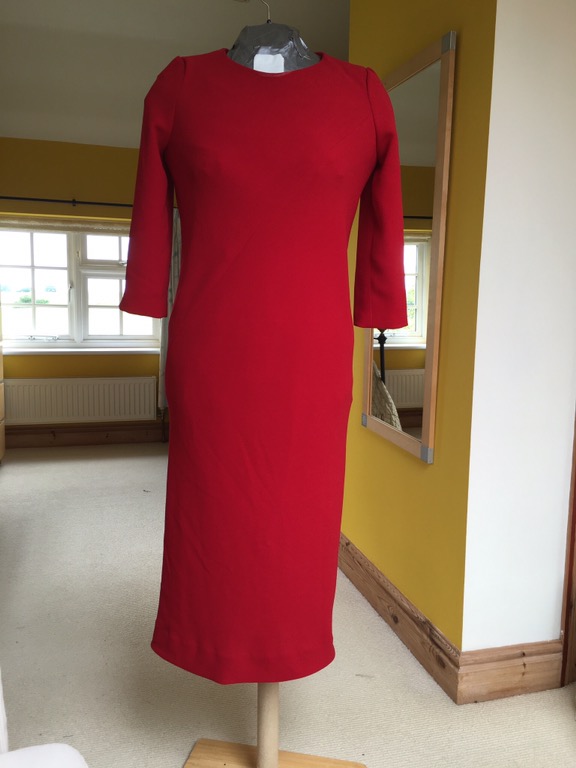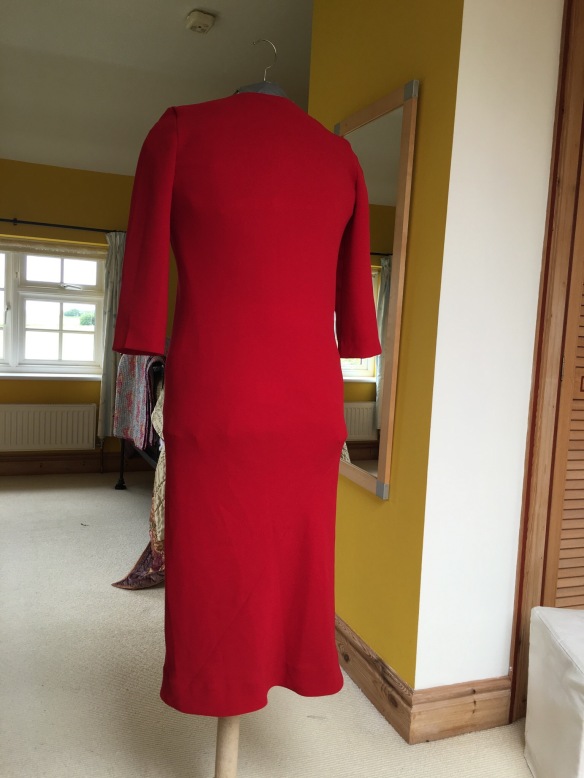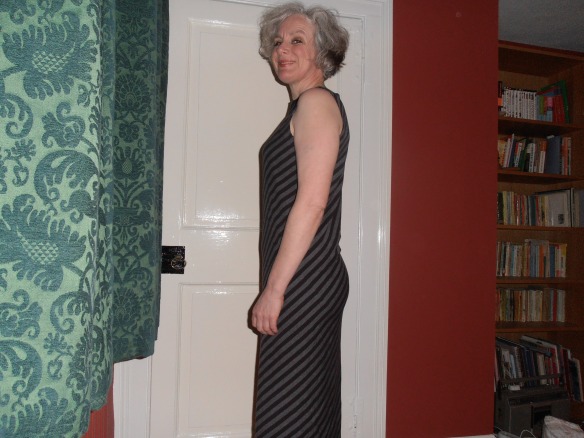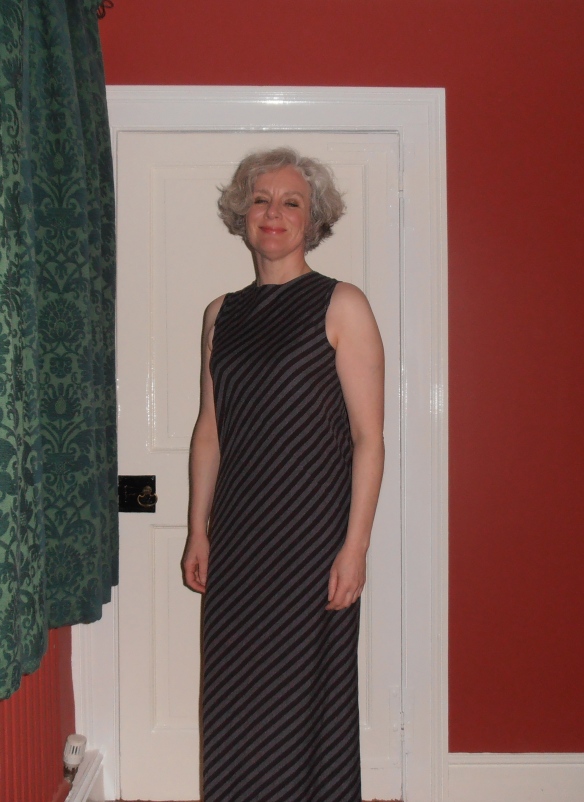If you followed my previous post you now have a pattern which looks like a long rhomboid with necklines and armholes at one end. The long spiral seam is shown on the diagram below in red/mustard. This is cut on the grain so there is no problem with it stretching as you cut the fabric.
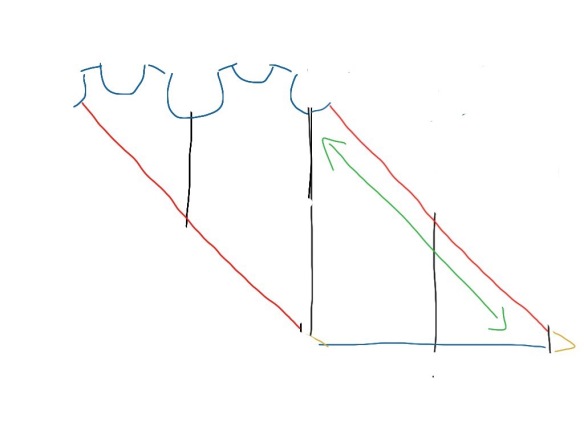 Drapey fabrics work best. I have made spiral dresses out of viscose jersey, silk crepe de chine and polyester triple crepe. All worked well. You will probably want to wear a slip underneath as lumps and bumps do tend to show up. Stripy fabrics are lovely as the stripe will curve around your body, also if you have crosswise stripes on your fabric it is very easy to match up the seam line. The stripes on my silk dress ran down the fabric so parallel to the seam, on my jersey dress they ran across the seam.
Drapey fabrics work best. I have made spiral dresses out of viscose jersey, silk crepe de chine and polyester triple crepe. All worked well. You will probably want to wear a slip underneath as lumps and bumps do tend to show up. Stripy fabrics are lovely as the stripe will curve around your body, also if you have crosswise stripes on your fabric it is very easy to match up the seam line. The stripes on my silk dress ran down the fabric so parallel to the seam, on my jersey dress they ran across the seam.
You will need a lot of fabric, I used 2.5m but it will depend on how long you have made your pattern. You only use quite a narrow piece so, if you’re using wide fabric, you will probably find you have enough left over for another dress. Handy if you have an accident with your over-locker (don’t ask!). I made a pair of sleeves and a pencil skirt with my left over red crepe and still had quite a bit of unused fabric at the end.
When you put the pattern on the fabric don’t forget that you have not included any seam allowances along your spiral seam. You could add these to the pattern but I found it relatively simple to just cut my dress 1.5 cm wider on both sides.
To make up, sew along the spiral seam matching the notches you included when you made up the pattern, then press and finish. I used a french seam on the silk dress , overlocked the seam on jersey and an ordinary seam on the triple crepe – in other words it doesn’t really matter which sort of seam you use. After that sew the rest of the dress as you would any other i.e. sew the shoulders, finish the neck line, add sleeves if you are using them.
Bias fabric tends to stretch so I recommend you hang the dress in the wardrobe for a few days before you hem it.
I’d love to see any dresses you make using these instructions!

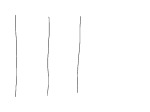


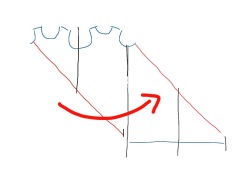
 eet exactly in the bottom right hand corner (which is
eet exactly in the bottom right hand corner (which is
 rtunately my lovely friend Alice’s birthday party gave me the motivation and impetus to get it finished.
rtunately my lovely friend Alice’s birthday party gave me the motivation and impetus to get it finished.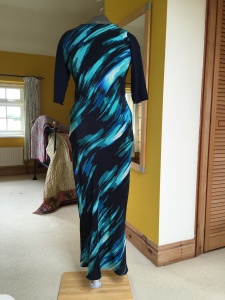 Eventually inspiration struck and two days before the party I took out my stretch sleeve block and cut a pair of sleeves from some viscose jersey. I then added a facing at the neckline and a couple of hours before the party a rolled hem.
Eventually inspiration struck and two days before the party I took out my stretch sleeve block and cut a pair of sleeves from some viscose jersey. I then added a facing at the neckline and a couple of hours before the party a rolled hem.